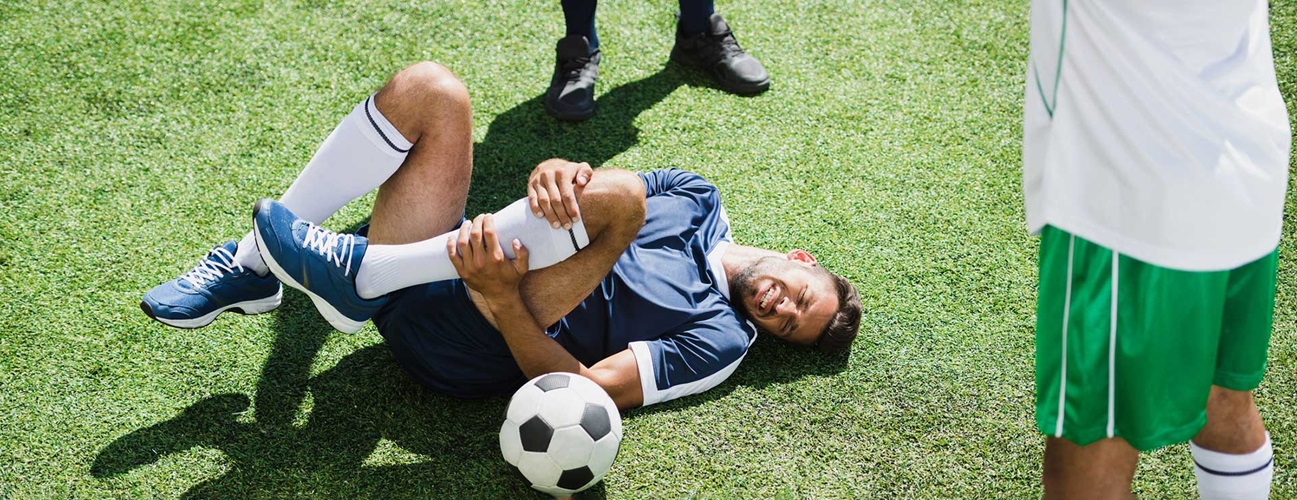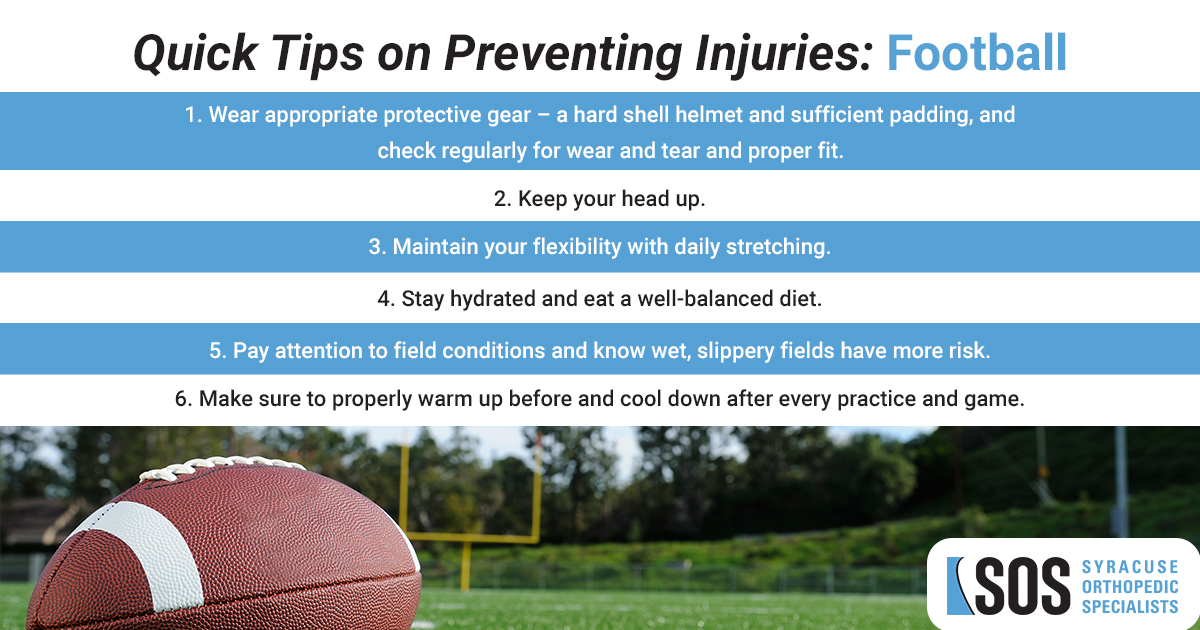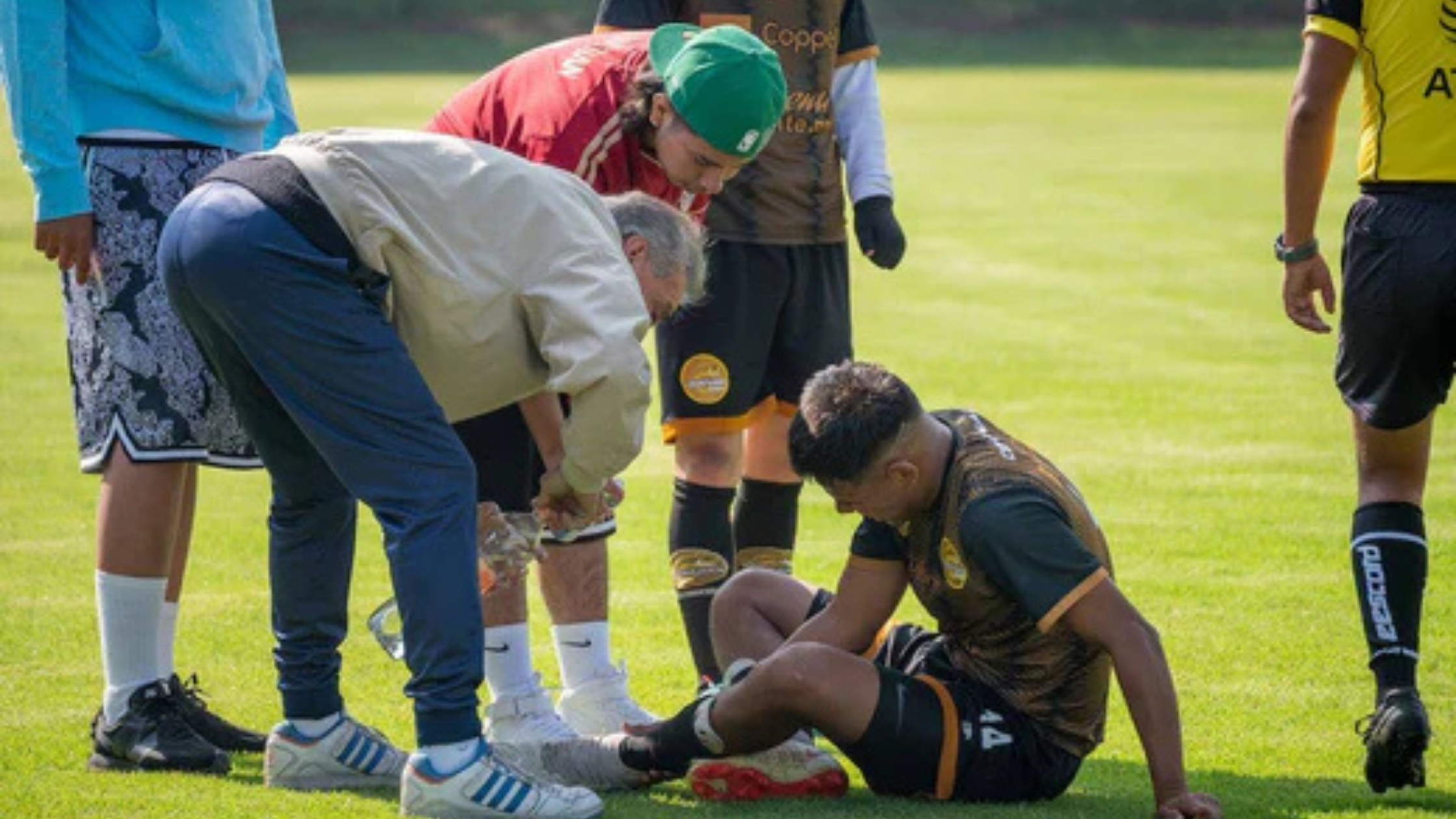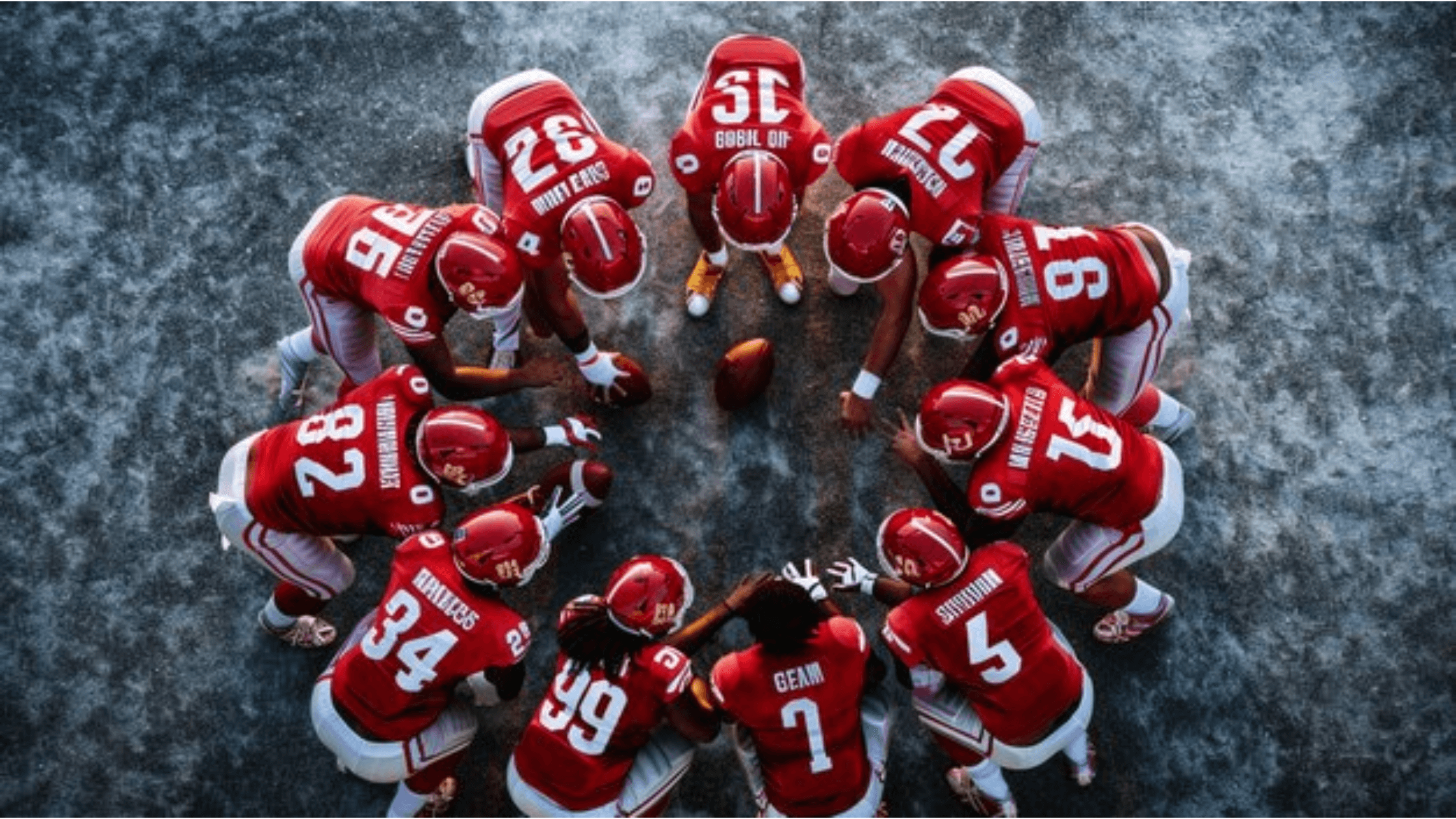Football is an exciting and intense sport. Injuries can happen if not careful.
Preventing injuries is crucial for players. Understanding how to stay safe can make the game more enjoyable and keep you on the field longer. Injuries can sideline even the best athletes, affecting their performance and overall well-being. This guide will help you learn key tips to avoid common football injuries.
Whether you’re a seasoned player or just starting out, these tips will help you stay healthy and focused on the game. Let’s dive into effective strategies that can keep you safe and enhance your football experience.
Warm-up Exercises
Warm-up exercises play a crucial role in preventing football injuries. They prepare muscles and joints for action, reducing the risk of strains. Regular warm-ups also improve flexibility and performance on the field.
## Warm-Up Exercises Before hitting the field, it’s crucial to warm up properly. A good warm-up routine can help you avoid injuries and play at your best. It prepares your body for the intense activity ahead and gets your muscles ready for action. ### Dynamic Stretches Dynamic stretches are a great way to start your warm-up. They involve moving parts of your body and gradually increasing reach, speed, or both. This helps improve flexibility and blood flow to your muscles. Leg swings are one simple dynamic stretch. Stand on one leg and swing the other leg forward and backward. Do this ten times on each leg. Arm circles are another effective dynamic stretch. Extend your arms out to your sides and make small circles. Gradually make the circles bigger and then reverse the direction. Walking lunges can also be useful. Take a step forward and lower your body until your front knee is at a 90-degree angle. Push through your front leg to rise and step forward with the other leg. ### Cardio Drills Cardio drills are essential to elevate your heart rate. They prepare your cardiovascular system for the game ahead. Plus, they can be fun and engaging. Jumping jacks are a classic choice. Start with your feet together and hands at your sides. Jump up while spreading your legs and raising your arms above your head. Return to the starting position and repeat for 30 seconds. High knees can get your blood pumping quickly. Stand tall and run in place, bringing your knees as high as possible. Do this for 30 seconds, focusing on quick, light steps. Butt kicks are another great drill. Run in place, kicking your heels toward your glutes. Keep your knees pointing down and your steps quick. Aim for 30 seconds of continuous movement. Do you warm up before your games? If not, it’s time to make it a habit. Consistent warm-ups can keep you on the field and off the sidelines. Start with these exercises and notice the difference in your performance and injury prevention.

Proper Gear
Proper gear is crucial for preventing football injuries. Wearing well-fitted helmets, pads, and cleats can reduce the risk. Regular equipment checks ensure safety.
Proper gear is essential for preventing football injuries. It protects players and enhances performance. Wearing the right gear keeps you safe from common injuries. Below are key aspects of proper gear that every player should consider.
Protective Equipment
Protective equipment is vital for safe play. Helmets shield your head from impacts. They reduce the risk of concussions. Shoulder pads protect your upper body. They absorb shocks from tackles. Mouthguards prevent dental injuries. They safeguard your teeth during collisions. Wearing these items correctly can prevent serious injuries.
Suitable Footwear
Choosing suitable footwear is crucial. Cleats provide traction on the field. They prevent slips and falls. Good cleats fit well and support your feet. They reduce the risk of sprains and strains. Proper footwear ensures stability during play. It helps you move quickly and safely. Always wear the right shoes for the surface you play on.
Strength Training
Strength training is a key part of preventing football injuries. It helps build muscle, enhance stability, and improve overall performance. Strong muscles support joints and reduce the risk of strains and sprains. Incorporating core workouts and leg strengthening exercises can keep players on the field and out of the doctor’s office.
Core Workouts
A strong core is essential for football players. It helps with balance and posture. Planks are great for core strength. Start with a basic plank. Hold for 30 seconds. Increase the time as you get stronger. Side planks target the oblique muscles. They improve lateral stability. Bicycle crunches are another effective exercise. They engage the entire core.
Leg Strengthening
Strong legs are vital for football players. They provide power and speed. Squats are perfect for building leg strength. They target the quadriceps, hamstrings, and glutes. Lunges are also beneficial. They improve balance and coordination. Calf raises strengthen the lower legs. They help with quick movements on the field.

Hydration
Proper hydration is one of the key elements in preventing football injuries. Staying hydrated helps maintain peak performance and reduces the risk of cramps, fatigue, and even serious injuries. But, it’s not just about drinking water; understanding the role of electrolytes is equally important.
Importance Of Water
Water is essential for regulating your body temperature and lubricating your joints. When you sweat during practice or a game, your body loses water rapidly. It’s crucial to replace this lost fluid to keep your muscles functioning properly.
Make it a habit to drink water before, during, and after your activities. Aim for at least 8-10 glasses a day, but consider drinking more if you’re participating in intense training sessions. Notice how your performance improves when you’re well-hydrated.
Ever felt sluggish or dizzy on the field? That might be due to dehydration. Keep a water bottle handy and take regular sips to avoid these issues.
Electrolyte Balance
While water is vital, don’t forget about electrolytes like sodium, potassium, and magnesium. These minerals help control muscle contractions and nerve function. Losing too many electrolytes through sweat can lead to cramps and spasms.
Sports drinks can be a good source of electrolytes, especially during long training sessions. However, they can be high in sugar. Opt for balanced options or make your own electrolyte drink with water, a pinch of salt, and a splash of fruit juice.
Bananas, oranges, and leafy greens are natural sources of electrolytes. Adding these to your diet can help you maintain a healthy balance. Have you ever tried snacking on a banana during halftime? It might be just what your body needs.
So, how do you know if you’re getting enough electrolytes? If you experience frequent muscle cramps, it’s a sign you might need more. Monitor your intake and adjust as needed.
Hydration plays a pivotal role in keeping you injury-free on the football field. Make it a priority, and you’ll likely notice an improvement in your performance and overall well-being.
Nutrition
Nutrition plays a crucial role in football injury prevention. Proper nutrition helps athletes maintain energy levels, improve performance, and recover faster. It is essential to focus on what you eat before and after games.
Pre-game Meals
Eat a balanced meal 3-4 hours before the game. Include lean proteins, whole grains, and vegetables. This helps in maintaining energy levels. Avoid heavy, fatty, or fried foods. These can slow you down. Drink plenty of water to stay hydrated. An hour before the game, have a light snack. A banana or a small granola bar works well.
Post-game Recovery
Replenish your body’s nutrients after the game. Eat within 30 minutes of finishing. A mix of protein and carbs aids muscle recovery. Chocolate milk or a protein shake is a quick option. Also, hydrate with water or an electrolyte drink. Continue eating balanced meals throughout the day. This supports overall recovery and keeps you ready for the next game.
Rest And Recovery
Taking breaks and getting enough sleep reduces the risk of football injuries. Muscles repair and strengthen during periods of rest. Proper recovery routines are essential for maintaining peak performance and preventing strains.
Rest and Recovery Football is an intense sport that demands a lot from your body. While rigorous training is essential, rest and recovery are equally important to prevent injuries and enhance performance. Balancing your practice sessions with adequate downtime can make a significant difference in your overall health and skill level.
Sleep Habits
Good sleep habits are crucial for effective recovery. Aim for at least 7-9 hours of sleep each night. Your muscles repair and grow during sleep, reducing the risk of injuries. Consider setting a consistent sleep schedule. Going to bed and waking up at the same time every day helps regulate your body’s internal clock. This routine can improve the quality of your sleep. Avoid screens before bedtime. The blue light from phones and computers can disrupt your sleep cycle. Try reading a book or listening to calming music instead.
Muscle Relaxation
Muscle relaxation is another key aspect of recovery. Stretching after practice can help reduce muscle tension. Focus on major muscle groups used in football, like your hamstrings, quads, and calves. You can also use foam rollers to massage your muscles. Rolling helps increase blood flow and reduce stiffness. It’s a simple tool that can make a big difference. Consider incorporating regular massage therapy into your routine. Professional massages can target deeper muscle layers, providing relief and promoting faster recovery. Taking time to rest and recover can be your secret weapon in staying injury-free. How do you integrate rest and recovery into your football routine?
Technique Training
Technique training is crucial in football injury prevention. Players must learn the correct techniques. This helps avoid unnecessary injuries. It also improves performance on the field. Here, we will discuss safe tackling and proper kicking techniques.
Safe Tackling
Tackling can be dangerous if done wrong. Always keep your head up. Never lead with your helmet. Use your shoulders to make contact. Wrap your arms around the opponent. This helps bring them down safely. Keep your body low and balanced. This prevents falling awkwardly. Practice these steps regularly. It will become second nature.
Proper Kicking
Kicking is another area where technique matters. Proper form reduces the risk of injury. Always warm up before kicking. Stretch your legs and hips. Align your body with the ball. Keep your eyes on the ball. Follow through with your kick. This ensures a smooth motion. Using the correct part of your foot is key. The instep or top of the foot works best. Avoid striking with your toes. Practice kicking with both feet. This builds muscle memory and balance.
Regular Health Check-ups
Regular health check-ups are essential for football players. They help identify potential health issues early. This proactive approach can prevent serious injuries. Regular visits to healthcare professionals ensure players stay in peak condition.
Physical Exams
Physical exams assess a player’s overall health. Doctors check the heart, lungs, and other vital organs. They also examine muscles and joints. This helps detect any weaknesses or problems. Early detection can prevent injuries during games.
Injury Assessments
Injury assessments focus on past injuries. Doctors evaluate recovery progress. They also look for signs of recurring issues. This information helps create personalized training plans. Proper care and attention can reduce the risk of re-injury.

Credit: www.sosbones.com
Frequently Asked Questions
How To Avoid Getting Injured In Football?
Warm up properly before playing. Wear appropriate gear, including shin guards and proper footwear. Stay hydrated and maintain fitness. Practice good technique and follow the rules. Listen to your body and rest when needed.
What Are The 5 Guidelines For Preventing Injury?
1. Warm up before exercising to prepare your muscles. 2. Use proper technique to avoid strain. 3. Gradually increase intensity and duration of workouts. 4. Wear appropriate gear for your activity. 5. Listen to your body and rest when needed.
How Do Nfl Players Prevent Injuries?
NFL players prevent injuries through strength training, proper conditioning, and flexibility exercises. They wear protective gear and follow nutrition plans. Regular medical checkups and adhering to safety protocols also help.
What Are The Top 3 Injuries In Football?
The top 3 injuries in football are ACL tears, ankle sprains, and hamstring strains. These injuries often occur due to the sport’s high-intensity movements and physical contact. Proper warm-ups and conditioning can help prevent them.
Conclusion
Keeping safe while playing football is essential. Follow these injury prevention tips. Warm up before each game. Stay hydrated and wear the right gear. Strengthen muscles through regular exercise. Listen to your body and rest when needed. Pay attention to technique and form.
Stay alert and focused on the field. With these steps, you can reduce injury risks. Play smart, play safe, and enjoy the game!








